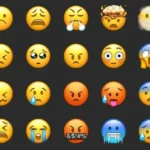
Caffeine is a central nervous system stimulant and although it is classified as a psychoactive drug, it is unregulated and legal in most countries. Caffeine has a bitter taste and occurs naturally. When consumed in small amounts, it can stimulate concentration and memory. as well as help prevent drowsiness. However, when consumed in excessive amounts it can lead to increased heart rate, anxiety, restlessness, and insomnia. As with many types of medication, stopping all caffeine intake with regular use can lead to withdrawal symptoms such as irritability and headaches. Caffeine can have some health benefits, such as: B. Reducing the risk of developing specific cancers and Alzheimer’s disease.
According to the American Academy of Sleep Medicine, it takes about 30 to 60 minutes for caffeine to reach its peak level in the blood. The body typically eliminates half of the drug in 3 to 5 hours, and the remainder can linger for 8 to 14 hours.
Despite most people getting up and wanting coffee (because of the caffeine it contains), the body is already alert. It’s not really necessary until later when cortisol levels in the brain decrease.
96% of beverage caffeine consumed in the US is from coffee, soft drinks, and tea, with coffee contributing the most to caffeine intake.
It only takes about 10 minutes from the time one drinks a beverage with caffeine for it to kick in and have its effects in the brain.
Coffee is still the best way to get a rush of caffeine quickly; a tall Starbucks coffee will send about 260 mg of caffeine rushing through your veins, compared to the 45 mg in the same size Diet Coke.
Because caffeine can be addictive, it can cause withdrawal symptoms when someone stops consuming it. This mild physical dependence can lead to nasty headaches and the best way to cut caffeine from the diet is by gradually reducing the amount one consumes over a period of time.
Don’t be fooled by energy drinks like Red Bull and Monster. They actually contain less caffeine than a cup of coffee and instead are filled with tons of chemicals and sugar, so you end up loading up on empty calories for less energy.
Caffeine can have a variety of side effects including blurred vision, dizziness, dryness of the mouth, drowsiness, decreased hunger, increased hunger, thirst, confusion, anxiety, insomnia, irritability, hyperglycemia, muscle tremors, nausea, stomach aches, rapid heartbeat, diarrhea, increased urination, and ketones in the urine.
Caffeine is the most socially acceptable drug for a reason. Studies suggest that it can improve mood and concentration, sharpen your focus, and increase lifespan. Recently it has been linked to staving off Alzheimer’s and Parkinson’s.
It would take the caffeine found in 100 cups of coffee, consumed in four hours, to kill an adult.
Caffeine does have a darker side (and we’re not talking espresso). Caffeine has been linked to upping anxiety, sleeplessness, and even causing psychosis. Taken in too high a dose, caffeine can cause vomiting, convulsions, coma, and even death.
Despite being labeled ‘decaffeinated’, this type of coffee usually still contains caffeine.
Once the caffeine hits your stomach it takes about 20 minutes for your brain to start feeling the effects.
Women usually metabolize caffeine more quickly than men, and people who smoke metabolize it twice as fast as someone who doesn’t smoke.
Caffeine works by blocking adenosine, the neurotransmitter that tells your brain it’s tired.
There is more caffeine in coffee than there is in most energy drinks.
While adenosine is blocked, dopamine production increases, meaning that a cup of coffee in the morning might just make you a happier person.
There is more caffeine in a lighter roast coffee than a darker roast coffee because roasting burns off caffeine.
Caffeine can increase athletic ability by 3%. Aside from telling your brain it’s not tired, caffeine increases the amount of calcium released inside our muscles, enabling them to work harder.
Caffeine can be found naturally in a variety of foods including seeds, fruits, leaves, cocoa beans, kola nuts, chocolate, and tea leaves.
It is important to remember caffeine is a drug, and with any drug, the withdrawals are hard. Expect an inability to concentrate, headaches, and even flu-like symptoms if you plan on giving it up.
Caffeine is sometimes found in medications.
The Food and Drug Administration considers 400 milligrams a safe amount of caffeine for healthy adults to consume daily.
Caffeine can be manmade – and this artificial caffeine is sometimes added to foods and beverages.
Pregnant women should limit their caffeine intake to 200 mg a day, according to the American College of Obstetricians and Gynecologists.
It is estimated that the average American consumes approximately 200mg of caffeine each day in some form or another.
The half-life of caffeine, or the time it takes to eliminate one-half of the caffeine people have in their bodies, is about 4 hours, said James Lane, an emeritus professor of psychiatry at Duke University School of Medicine in Durham, North Carolina.
Finland is the country with the highest caffeine consumption per person per day at roughly 400mg.
In 2014, two young men — an 18-year-old in Ohio and a 24-year-old in Georgia — overdosed on pure powdered caffeine, according to the FDA.
Medical experts at the Mayo Clinic recommend that teenagers consume no more than 100mg of caffeine a day. Younger children are best to avoid consuming caffeine as much as possible.
Although it contains less caffeine than a small cup of coffee, a 12-ounce can of Sunkist Orange soda has 41 milligrams of caffeine in it, according to the Center for Science in the Public Interest.
It’s best to avoid consuming caffeine late in the day because it can make it difficult to fall asleep. It can take 4 to 12 hours for the body to completely clear caffeine.
Caffeine has also been added to shampoos to purportedly thicken hair and stop hair loss, but there’s no good evidence that these pricey products can truly deliver results.
Powdered caffeine can be deadly because it only takes a little bit to kill someone. One teaspoon of the powder is equal to 28 cups of coffee. And the powdered form is more potent.
Caffeine in plants function as a natural pesticide to help ward off insects that may attack the plants, and it may be useful in pest control, suggested a study from researchers at Harvard Medical School that was published in 1984 in the journal Science. At high doses, caffeine can even be toxic to insects.









